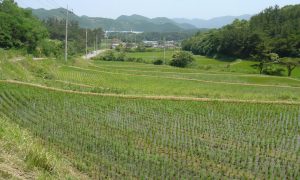eng.koreatemple.net – Site in English about Korean Buddhist temples
Web site offers rich information in English on Korean Buddhism
http://www.koreaherald.co.kr/SITE/data/html_dir/2005/04/18/200504180013.asp
Among favorite spots for foreign tourists are Buddhist temples. Their serene, nature-oriented atmosphere and rich selection of cultural artifacts are always a great tourist attraction.
One major problem, however, is that information about these temples in English has been almost non-existent – until now.
To help foreign believers and laypeople understand Korean Buddhism and temples, the Jogye Order of Korean Buddhism, the country’s biggest Buddhist organization, has set up a Web portal (eng.koreatemple.net).
“Korea’s traditional culture has long advanced with Buddhism, and we want more foreign tourists to appreciate part of our cultural heritage through Buddhism,” said Rev. Hyun Jin, director of Cultural Project Corps for Korea Buddhism.
“A growing number of foreign people are interested in the Korean culture, and we want them to get a glimpse of what the Korean culture really is through our project,” he said in an interview with The Korea Herald
In addition to the new Web portal, the Jogye Order is currently working on setting up a large database with information about Korea’s Buddhist culture and art. “We plan to apply information technology to turn a huge amount of Buddhist artworks, documents and cultural assets into a database,” he said.
In a related move, the Jogye Order is undertaking a Buddhist culture center project costing about 16 billion won. “The culture center, if successfully built, will greatly improve the conditions for those who want to learn about Korean culture, art and Buddhism,” Rev. Hyun-jin said.
The Korea Temple Web portal is the first step to achieve the broad objective of promoting Buddhism among foreigners interested in Korean culture, history and art, he said.
The portal site covers a wide range of subjects that are essential to understanding Korean Buddhism. The History of Korean Buddhism section, for instance, shows the official date for the introduction of Buddhism to Korea from China as 372 A.D.
In the early period, the spread of Buddhism had a significant effect on the development of many aspects of national culture and also inspired the development of art: bells, pagodas, architecture, and paintings.
In 668 A.D., the kingdom of Silla conquered the other two kingdoms. Throughout the Unified Silla period, Buddhism continued to prosper, and grew both academically and culturally. Toward the end of the period, Zen Buddhism was introduced from China and this added a new dimension to Korean Buddhism.
The Goryeo Dynasty assumed power in the 10th century and Buddhism continued to be a national religion, with the main focus placed on rituals. But Buddhism slowly declined as the new rulers of the Joseon Dynasty adopted neo-Confucianism, leading to the oppression and restriction of Buddhism.
While the Joseon government officially persecuted Buddhism, the common people continued to believe in it. In short, Korean Buddhism has been spreading and advancing for some 1,600 years.
In the Buddhist Culture section of the site, online visitors can browse information about temple etiquette, major events in Buddhism, Buddhist music and dance, temple food and tea.
“Foreign tourists show keen interest about temple food and tea, especially when they sign up for temple-stay programs,” said Oh Jin-young, Web producer of the Korea Temple site.
“Our portal site also provides multimedia content, and what’s popular is Dharma Talk Video,” she said. The video clips include two lectures by the late Zen Master Seung Sahn, a legendary figure who has promoted Korean Buddhism in the world, and a series of English-language lectures by Rev. Dae Bong.
In the Festivals and Ceremonies section, visitors can read historical background and ritual details about the Lotus Lantern Festival, Scroll Painting Ceremony and Young-san-jae, a well-known Buddhist ceremony.
And, the Major Temple & Travel section is filled with detailed information about 30 temples in Korea, targeting foreign tourists. The section offers each temple’s historical background, tour guide information, cultural treasure details and a virtual map.
“Each temple has a route through which outside visitors are allowed to move, and through graphics we show the right direction and how to move around a temple without disturbing monks who are training there,” Oh said.
Oh said the Web portal will provide Buddhist scripture passages translated into English on a regular basis, and foreign believers, or those who are interested in Korean religion, are welcome to join message boards to express their opinions and ask questions.
(insight@heraldm.com)
By Yang Sung-jin
2005.04.18
